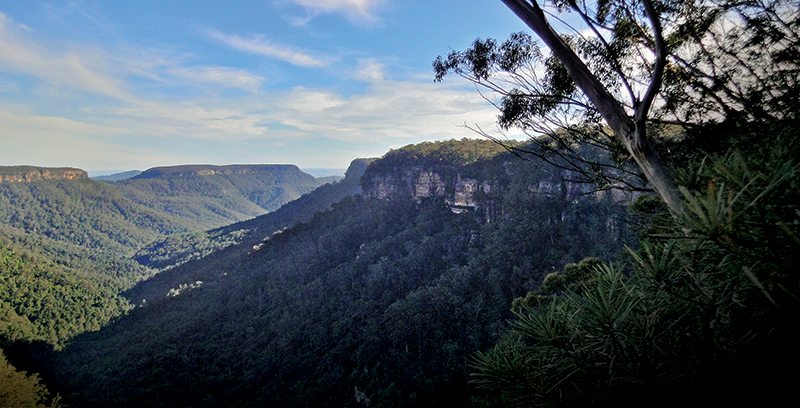
If you go by such films as Mad Max and The Adventures of Priscilla, Queen of the Desert, Australia must seem like a vast desert continent. In his book, The Sunburned Country, Bill Bryson describes Australia as “mostly empty and a long way away.” Both are not necessarily wrong, but don’t provide a complete picture. Although Australia is the hottest, flattest and most inhospitable of all the inhabited continents, it does have some redeeming features, especially for motorcyclists. The endless tracks in the “red desert” center provide a heaven of sorts for the long suspension and large fuel tanks of the dual-sports. The eastern and southern coasts, the fringe of 60-100 miles bordering the ocean that is home for 83 percent of the population, offer a milder climate, a wider range of flora and fauna, and some great motorcycle riding for the rest of us.
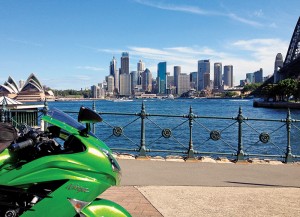
Australia is big, roughly the same size as the United States, but with a population of only 23 million people. Being a British colony (it is still part of the Commonwealth), four percent of its non-indigenous citizenry are British expats. This is followed by two percent from New Zealand, one of its closest neighbors.
There are six main states (Victoria, South Australia, Western Australia, Queensland, Tasmania and New South Wales) and two territories (Northern Territory and Australian Capital Territory) in mainland Australia. As in the U.S., there are slight differences in vehicle and driving regulations from state to state.
Australian motorcyclists are, in general, friendly. There is no “wave” here, since they ride on the left, but a head nod is common. Motorcycles here are expensive, typically $4,000-$5,000 more than in the States, and hold their value longer. Likewise, their owners tend to hold onto them longer. It’s not uncommon to see 10-15-year-old bikes with low kilometers still in regular service, or making the weekend run. Rental bikes are readily available. Helmets are mandatory and to be sold here must conform to an Australian standard; ECE, Snell and DOT standards are not currently recognized. In general, riding gear is common on all but the scooter crowd. Gas (petrol) is expensive, on par with Europe, about 1½-2 times what it costs in the States, and sold in liters.
Roads are paved in asphalt, but in most places it seems rougher than what is common in the States and bumpier overall, similar to frost-heaved roads in the Northeast, surprising for a country that doesn’t really get any snow. Around Sydney, electronic tolls are common on the motorways, bridges and tunnels; they can be gotten around to some degree but it’s more trouble than it’s worth. A phone number is provided for those caught without a pass. A U.S. motorcycle license is fine, but remember, as in Britain, they drive on the left.
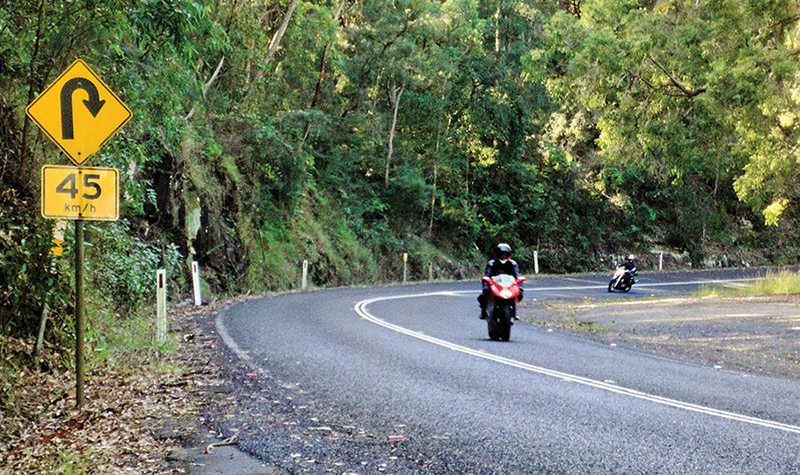
In general, roads aren’t crowded, and drivers seem to be more aware of motorcycles and often give way to allow them to pass, especially in the twisty bits. Passing lanes are common as are road safety signs aimed specifically at motorcyclists.
The weather along the coast in Sydney is mild, with lows around 40 degrees in winter (August) and highs up to 100 degrees in summer (February). Most days are in the upper 70s or mid 80s, which makes for some great riding. The climate ranges from full-on tropical in the north to arid and dry in the center, to quite temperate on the southern and eastern coasts. While much of the country seems made for dual-sport or adventure touring bikes, plenty of paved roadways exist.
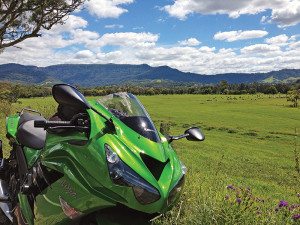
Sydney, the country’s largest city (population 4.6 million), is on the eastern coast and is surrounded by national parks that offer some great motorcycle rides. One such ride is northwest out of Sydney, along the coast and through the wine-growing region of the Hunter Valley and two national parks. It can be done in a single day or overnight. From Sydney, the ride heads north across the Harbour Bridge (the free direction) with the Sydney Opera House on the right, and north on the Pacific Highway. For the next hour or so it winds through the once small villages that have all grown together to become the northern Sydney suburbs. The 60 kph (37 mph) limit here is electronically enforced with cameras, though traffic is heavy enough to make it less chafing than it might be otherwise.
Finally, in Hornsby, comes relief—the start of the M1 motorway. Here the speed limit rises quickly up to 100 kph, or 62 mph. Exiting at Berowra Waters, the city and suburbs are left behind. After a stop for fuel, rejoin the Pacific Highway, State Route 83, north toward Mooney Mooney. This stretch has been branded the “Old Road” by the locals, as it was the main road between Sydney and Newcastle to the north before being replaced by the much “straighter and faster” M1, which happily left the winding, circuitous Old Road to the motorcyclists, driving enthusiasts and locals.
At the Old Road’s southern end, sustenance is available at Pie in The Sky. Pie, the meat pie in particular, is an Australian staple, along with coffee in all its many forms. Pies range from familiar fruit varieties (apple, raspberry, etc.) to meat pies: steak, steak and cheese, steak and mushroom, and chicken, all encased in a flaky pie crust, usually hand size and sold warm in a bag with a napkin as a handheld meal.
Speaking of food, there are at least three things to get right before stepping off the plane:
1. Fosters is not Australian for beer. There are lots of beers available here; Fosters is not typically one of them.
2. Australians don’t throw shrimp on the barbie. They will, however, happily grill you a prawn.
3. Those “blooming onion” things you might have seen at a chain restaurant in the States claiming to promote Australian cuisine don’t exist here. Never did.
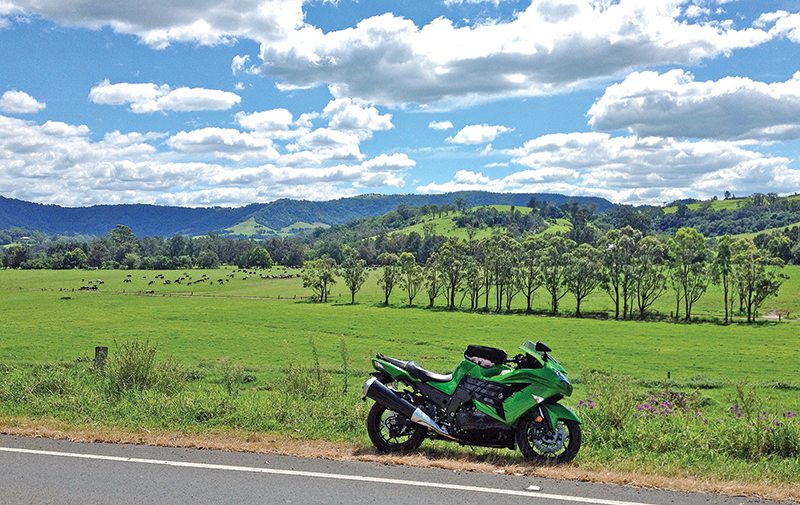
The road livens up just north of the pie shop, past Mount White and Brooklyn, winding along the canyon high above Mooney Mooney Creek. The first stretch is fairly smooth, then becomes a bit bumpy and less predictable. Posted at 60 kph, the tight corners leave little room for runoff, so enforcement is usually random and limited to the occasional straight stretch. For many local riders, the Old Road is a regular peg-scraping weekend ride.
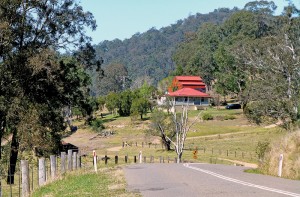
On the southern edge of Gosford it’s time to turn west and head for the Hunter Valley via the gateway, the Great North Road, State Route 33. Snaking along the eastern edge of the Yengo National Park, this is kangaroo, echidna and wombat territory. They’re out there for sure, but more in some places, less in others and, much like deer and moose in the States, dawn and dusk are the most hazardous. There is an online video of a bike and koala collision, but these appear to be even more rare (koalas spend much of their time asleep in the upper branches of the eucalyptus trees).
Wollombi is up next. The pub there is popular with motorcyclists and it is well situated as a base to explore the many wineries of the Hunter Valley. The road from Wollombi to Broke is a typical country road—a lane and a half wide without any centerline or shoulder. The road follows the Wollombi Brook through the valley with two wooden bridge crossings and scenic vistas that trade off between bush, grazing land and acres of vines.
After refueling in Broke, the eastern end of the Putty Road beckons. This motorcycling nirvana bends and winds its way south and west for the next 150 kilometers through both the Wollemi and Yengo national parks. The forest of gum trees, with their silver trunks stripped of bark, stretch to the horizon along either side of the road. About halfway along, the Grey Gum Café is a great lunch stop. From the western end of Putty Road, the motorway provides a speedy return to Sydney.
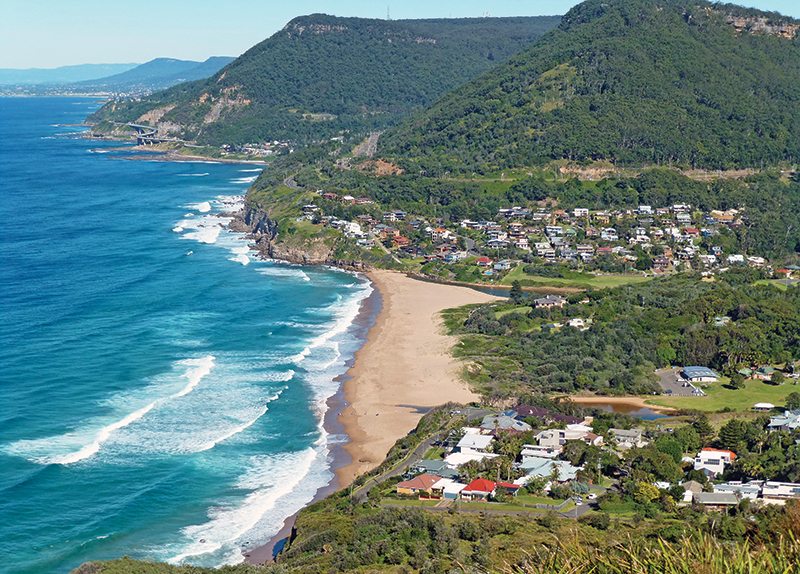
A southern run out of Sydney starts with more motorway through the suburbs, south of the airport to the Royal National Park and Grand Pacific Drive, both popular with motorcyclists. Entry to the park is free if you are not stopping. Its roads wind through tropical rainforest and bush to emerge at Stanwell Park, a popular hang gliding spot, which offers stunning views from the cliffs down the coast to the south and out over the Pacific Ocean. From Stanwell Park, the Grand Pacific Drive heads south, hugging the cliff face, through several small beach communities before dropping down to touch the ocean at Sharkey and Thirrol beaches.
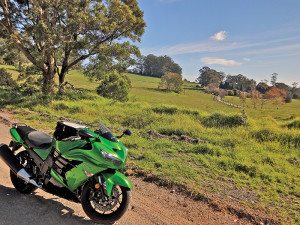
Inland, the Illawarra Escarpment rises to the sky, effectively isolating a narrow strip of tropical forest at the ocean’s edge. At Thirrol, Bulli Pass Road offers one of the few accesses to the top and the Princes Highway. Heading south, the motorway drops more gently down the escarpment to Albion Park, where the Illawarra Highway climbs dramatically back up to the west through the Macquarie Pass National Park. Motorcyclists take advantage of the slow-vehicle lane sections and passing lanes between switchbacks as it climbs up to the Southern Highlands. The reward at the top of the pass is cooler temperatures and a great lunch stop: The Robertson Pie Shop.
South of the pie shop, acres of grazing land and farms spread to the edge of the escarpment. A side trip to Fitzroy Falls provides a dramatic testament to its height. Moss Vale Road then switchbacks down from the Highlands into Kangaroo Valley, where a number of options will connect back up to the Princes Highway and north to Sydney, or overnight accommodation can be found.
With the reversed seasons in the Southern Hemisphere, the best times to visit are October/November (spring) and April/May (fall) as they provide the best weather and moderate temperatures. Overall, Australia is a great place for all types of motorcycling. The coastal areas around Sydney provide a great variety of scenery from tropical to eucalyptus forest, to rolling fields of green and cliff-side perches. And if you want to visit them, the deserts of Max and Priscilla are here, too!
(This article The Not So Sunburned Country was published in the June 2014 issue of Rider magazine.)

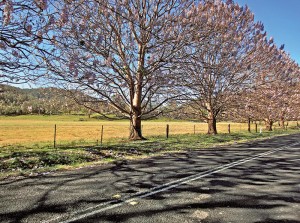
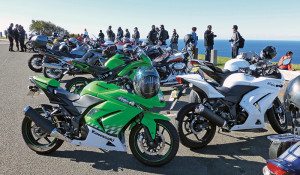
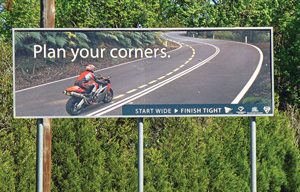
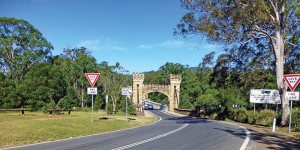
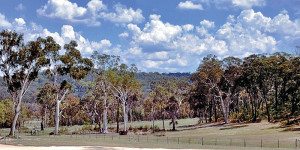
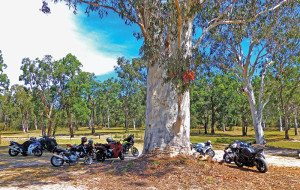
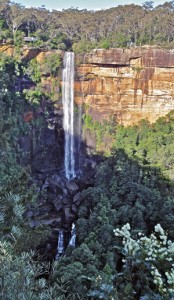
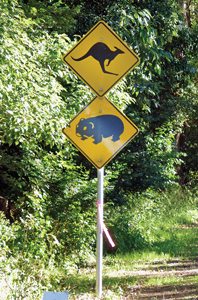
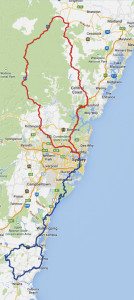
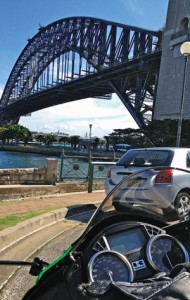







Looks beautiful, I would love to do this someday.